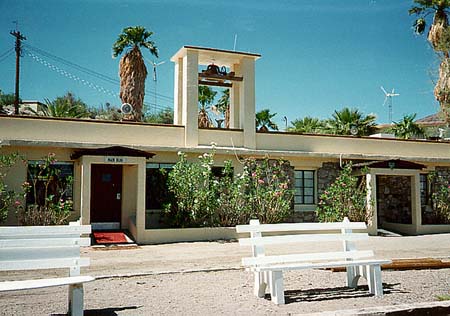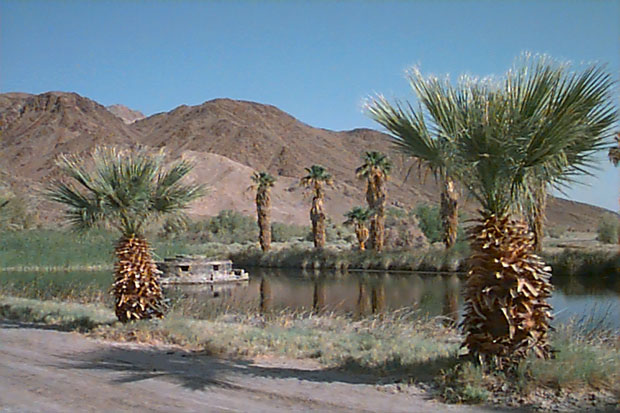Hancock Redoubt did not remain in action long after that. Less than a month later, the post was abandoned. It had been intended only as an overnight camp although an officer with the Boundary Commission credited it with a higher stature. "There is a small fort at the sink of the Mojave and another 35 miles above known as Camp Cady, neither of them are garrisoned. They have both been constructed of mud and willow brush and a half dozen resolute men could hold them against all of the Indians combined inhabiting the Great American Desert," he said.
- "I am told they were built to afford shelter to small parties of whites traveling through the country who were apprehensive of Indian activities," he added, "but it would seem to me that a party of Indians meditating on attack would have the sagacity to occupy the fort in advance."
TO GET THERE: Soda Springs and Soda Lake show on the Soda Lake 1:62,500 Quadrant. From Baker, go west six miles on U.S. 91. Turn on Road 466 to the south. In five miles, turn in to Zzyzx Springs, formerly privately-owned non-profit health and rest resort and now the Desert Research Center of the Fullerton State University. This is only fort along chain which is convenient to visit.


| B | Barracks |
| HQ | Headquarters |
| GH | Guardhouse |
| OQ | Officers Quarters |